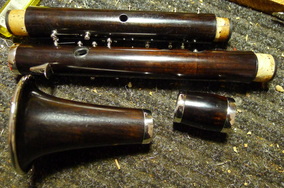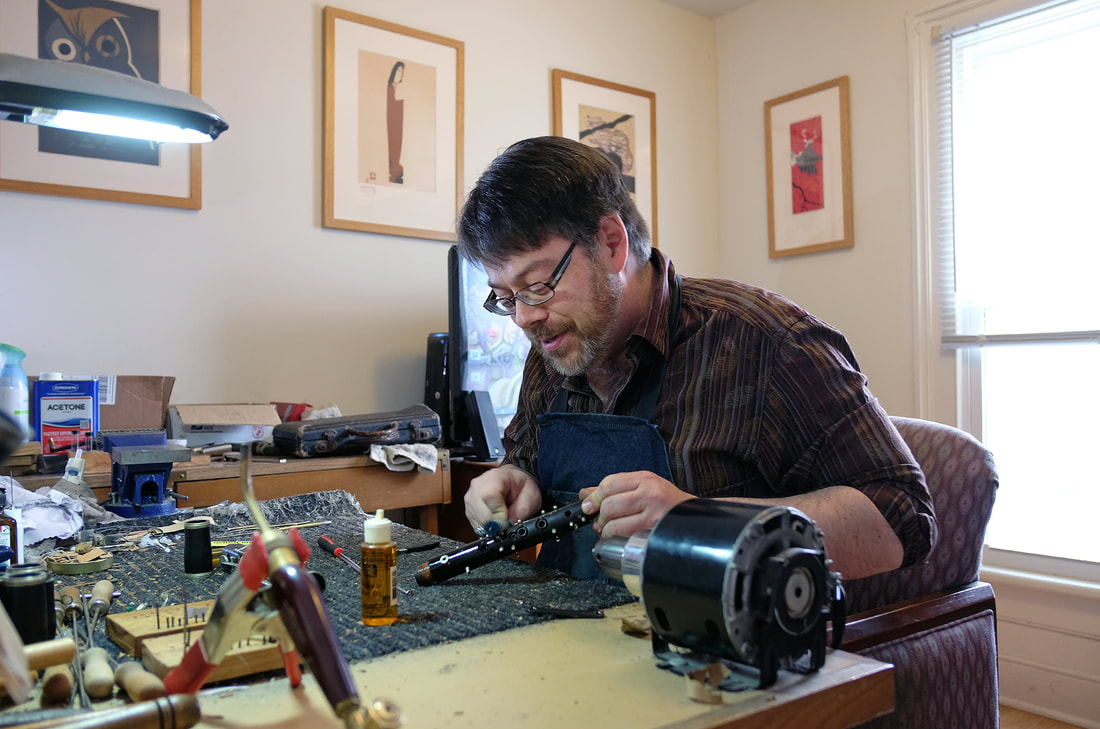 I was buffing this customer clarinet - A c.1900 'Bay State' Albert system in C - when I noticed I'd gone through a layer of black tinting (most likely a colored vanish or shellac) to a lighter color underneath. 'Uh -oh' thinks I, 'now what do I do?' Upon closer examination, I saw that the even layer of black was covering up reddish brown and honey stripes that were far more attractive than the tint, so I kept buffing. What I ended up with was a body that looks like it was carved out of Tiger's Eye, although my picture only gives a hint of its attractiveness! Is this what's under the ebonized tint on modern clarinets, and, if so, why would they cover it up? Or is the modern wood considerably less attractive and covered up for a good reason? This isn't the first time this has happened to me, but I don't have an explanation for it, so I thought I'd post and ask: does anyone know the reason for this? Please click on the pic for a better look, and let me hear from you....
8 Comments
 Recently, I posted a blog on Thibouville Freres clarinets, (an obscure French brand with which I've always had good luck), and it got me thinking about all the good playing horns I've handled in the last decade and how many of them weren't Buffets or Selmers. Just yesterday I finished this 1920's Pruefer 7 ring - obviously a pro instrument - and was really impressed: Great wood, well shaped keys, nicely assembly touches (like post locks on the lower stack), a large bore and an even, free-blowing response. Why spend $2600 if you can get something like this for less than $500? I wish there were more people out there on the net giving thumbs - up to good old makes like this, so people would have the courage to step up and try something different. Does anyone else have a similar experience ? |
Archives
February 2024
AuthorThe Licorice Shtick Blog is the creation of the Vintage Clarinet Doctor, a Winston Salem, NC based woodwind instrument repair shop specializing in vintage and antique clarinets, saxophones, and the occasional flute. Categories |

 RSS Feed
RSS Feed